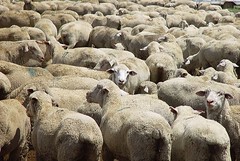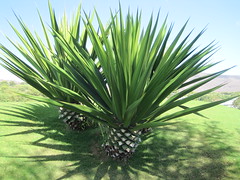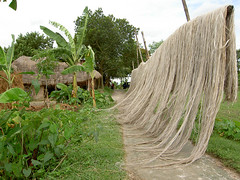 In 1994 Thomas Holland founded Corporate Floors Inc. with nothing
more than one truck and one employee. Fast forward nearly twenty years and
he now has a national services company with four locations throughout Texas
(Grapevine, Austin, San Antonio and Houston) and over 88 ‘solutionists.’
In 1994 Thomas Holland founded Corporate Floors Inc. with nothing
more than one truck and one employee. Fast forward nearly twenty years and
he now has a national services company with four locations throughout Texas
(Grapevine, Austin, San Antonio and Houston) and over 88 ‘solutionists.’Holland’s moniker for his employees is fitting given back in 2007 Holland himself solved a very large problem. It all started when Holland, over a decade into the carpet world, could no longer watch such a valuable resource go to landfills. Unfortunately, when he began to look for alternative outlets to the dump he found none. Rather than throw up his hands in defeat and pat himself on the back for trying, Holland made it his personal mission to find a solution.
Less than a year later Texas Carpet and Construction
Recycling (TCR) was born. Local economic conditions, including
supply, demand, and landfill tipping fees, typically dictate whether a collector
and/or processor can charge to accept the material, take it for free, or pay
its supplier. Fortunately for
Holland, Corporate Floors Inc. wasn’t the only one who wanted to be more
sustainable. Within a matter of months Texas
Carpet Recycling had partnered with the real estate giant CB Richard Ellis,
carpet giant Shaw Contact Group, among others. In fact, demand for ‘green’ was so big
that Holland’s original 3,000 square-foot facility could not keep up. Today the
company has a 32,000 square-foot space where
it regularly sorts, bales and grinds carpet from dozens of companies. TCR also diverts VCT, ceiling
tiles and other post construction materials from landfill.
Texas Carpet Recycling is only one aspect
of Holland’s green conscience.
In fact, perhaps more green than
recycling is Corporate Floors Inc.’s cleaning and maintenance services. Holland
was quick to recognize that carpet is one of the most costly features of any
businesses’ built environment. Beyond the fact that it takes a beating every time
someone walks through a facility, it affects how people feel and act. There is no greater impact to a
corporate budget or sustainability program than simply prolonging the life of
their assets, including flooring, with proper maintenance.
Accordingly, Corporate Floors Inc. cleans
over 40,000,000 square feet of carpet annually using the MilliCare dry carpet
cleaning system, saving over 1.7 million gallons of water over traditional
carpet cleaning. Using fewer chemicals, water, and effort, Corporate Floors
Inc. has systems that protect carpet and upholstered furniture (MilliCare),
floors (Waxnomore, Slipnomor, Marknomor), and tile & grout (saniGLAZE). For
example, Corporate Floors Inc. uses Vital Oxide, a food grade, broad-spectrum
antimicrobial, odorless, colorless, cleaning agent that has been certified by
USEPA to kill mold, bacteria, fungi, viruses, etc. without creating other
harmful byproducts that traditional bleaching produces. An added bonus for the
environment of course is that by extending floors’ lifetimes, Corporate Floors
Inc. is also doing their part to reduce waste. It should perhaps be mentioned that
Corporate Floors Inc. walks their talk by managing their own internal recycling
program for all paper, plastic and packaging. In addition to recycling the carpet on
all jobs, Corporate Floors also recycles the packaging it comes in.
To seal the green deal, Holland
established a partnership with American Forests and for every ton of carpet
diverted from landfills Corporate Floors Inc. plants a tree. To date that means
3,500 trees planted, and not in a monoculture orchard or random pattern;
American Forests plantings are guided by science with consideration to what is
the best mix of species to achieve optimal habitat, water filtration, and air
purification.
CARE is fortunate to have Holland’s
experience and insight on the board and looks forward to learning about the
future innovative projects Corporate Floors Inc. is likely to roll out.








